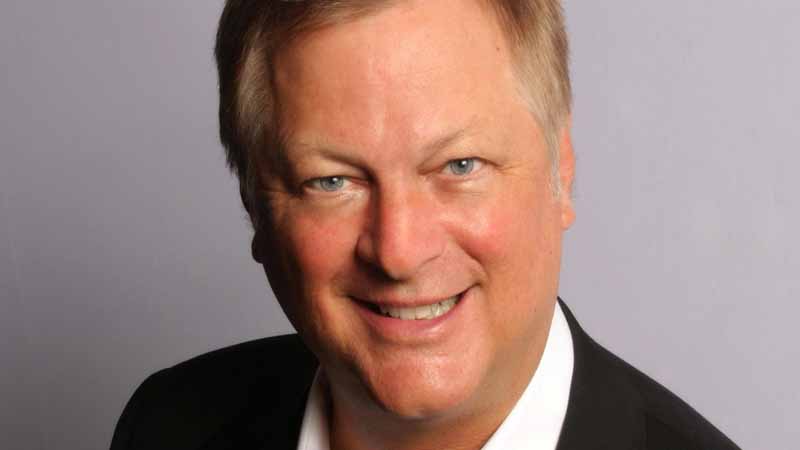Kent Billingsley Wants to Make Entrepreneurs and Intrapreneurs ‘Embarrassingly Rich’
Without knowing anything about you or the company you started (or now manage as an "intrapreneur"), Kent Billingsley is sure you're great at what you do. But he also knows you're frustrated that no matter how hard you work, how many qualified people you hire, and how aggressively you market, you're not making the profit you imagined all this would lead to.

Billingsley is the author of “Entrepreneur to Millionaire: How to Build a Highly Profitable, Fast-Growing Company and Become Embarrassingly Rich Doing It” (McGraw Hill, February 2021, foreword by Mark Cuban). As founder-president of the Revenue Growth Company, he has counseled thousands of organizations of all sizes and types in 36 countries and found they have similar problems "due to 20th-century thinking," he told Startup Savant.
"Fortunately, anybody can generate a lot more wealth, defined as cash on hand, consistent cash flow, and plenty of working capital, by generating revenue and profits using the fewest resources possible," Billingsley said.
He reveals his remedies in 257 pages that are so densely packed with innovative ideas that it will require several reads to fully recognize bad management habits. But there are no quick-fix "secrets to success," he writes. An organization going from half-alive to "winning all the time" is only possible if leaders follow a disciplined series of hundreds of small steps.
Making More Money Faster With Fewer Resources
Billingsley began his entrepreneurial career at 11, when he began teaching drum lessons, then mowing lawns, splitting logs, and selling lemonade and used golf balls. In high school, he started an audio-video store. He earned his B.S. in marketing from Indiana University in 1982 and moved to Dallas to work for Frito-Lay, a PepsiCo division.
After several promotions over the next five years, Billingsley went to work for H. Ross Perot's Electronic Data Systems (owned by General Motors 1984-96, when it became independent again, then was bought by Hewlett-Packard in 2008). In the mid-’90s, EDS asked him to form an internal management consulting team to uncover ways for units to optimize growth and profits.
"I realized spending and hiring a lot more was a flawed strategy," Billingsley said. "I could see that most leaders waste resources and eat profits while achieving only incremental growth and inconsistent performance. But at least it wasn't the practice common at other companies, which is the perverted approach of getting more work out of fewer people that burns out employees while abusing vendors."
As chief strategy officer and chief marketing officer at EDS Asia-Pacific, a billion-dollar unit with 11,000 employees and 3,000 products, he had an operating budget of $50 million.
In 2000, he returned to the US to co-found Micromuse, Inc., a network management software maker. He grew his division from $2 million in annual sales to $38 million in less than three years with a sales team that had a 98% close rate. At 43, he was ready to retire with stock worth $10 million in today's dollars.
His friends urged him to write a book on what he'd learned, but with mostly corporate experience and just a few startups, he decided that first, he wanted to prove that any company could grow more with less. Almost two decades later, TRGC had trademarked his methods taught in 600 units, and he was ready to publish.
The Case Against Conventional Wisdom
“Entrepreneur to Millionaire” is structured to make it easier to remember the lessons. Illustrated by stories about his experiences with clients, he asks readers, as he does his clients, to go back to basics, starting with why a business should be formed to address a Foundational Marketplace Problem (FMP). The FMP could solve a point of pain for customers by lowering cost, speeding delivery, reducing risk, or improving quality.
"There are endless opportunities to create wealth if you follow the right road map to owning a market," he wrote. "That requires designing the right business model, which is how parts of a company work together to turn products and services into money."
But too many are tempted to change their model beyond evolving naturally with their markets, commonly because they want the company to be all things to all customers. Billingsley explains how to next design a solid action plan.
Each chapter also lays out the argument against some aspect of the way most firms do business, no matter if it's a startup, a nonprofit, or a global corporation. He says most of the calls he gets are from entrepreneurs complaining that their "sales are all screwed up." He reports some startling statistics about attempts to increase sales:
- 95% of salespeople and entrepreneurs believe there is a "gift of sales" rather than the need for a more sophisticated system (and 98% of first sales hires don't work out).
- If a sales rep claims to have a 40-50% closing rate, the true scrubbed figure will likely be half that.
- Eight out of ten sales calls fail.
- 50% to 75% of sales prospects in a funnel will never buy because they weren't properly qualified or pitched.
The standard approach to growth brings more of both the good and the bad. Most owners-managers don't fully recognize that hiring another sales rep comes with eight categories of increased costs, for example.
"Leaders actually need fewer, but higher-quality, leads, fewer proposals sent out, but ones that will win more often, and fewer clients that aren't willing to sign long-term contracts," he said.
The Growth Revolution Solution
Looking at the structure of Billingsley's battle plan for radical change helps to begin to understand what is involved ("though this is only the tip of the tip of the iceberg"):
Phase One: Revenue Ready
In addition to identifying the FMP and designing the right business model to address it, every startup ought to have multiple revenue streams from the start. However, most focus on one, and many mature companies still have too few. Using his own InTents Glamping, which sells luxury tents, as an example, he lists 14 other sources of revenue, including clothing, workshops, downloadable content, how-to handbooks, and YouTube ads.
Phase Two: Market Ready
Most leaders don't know their customers and prospects very well ("most never even heard of psychographics"), nor their buying process. They should be aiming for the "sweet spot," but "targeting is not who you want, but who wants you."
Second, every business should be offering bundles of products and services with real added value that will speed buying decisions for bigger transactions.
Third, the quickest way to grow is using "power messaging tools," which exploit every opportunity to differentiate a firm from the competition, to attract the “Perfect Client Profile” — the ideal prospect.
Fourth, almost no businesses use tiered pricing, which is why "95% of products and services are priced too high or low." The traditional cost-plus method (that typically adds 20% profit) is a dead man walking, made unworkable by discounting to win new business. Counterintuitively, Billingsley says a better approach is to create six categories: give some things away, price some below cost, others at breakeven, some with a modest profit, some above market, and charge a lot for a premium level. Done scientifically based on what customers really want, any organization can increase sales and profits dramatically, he says.
Phase Three: Go to Market
In “Market Demand Creation,” he declares that "67% of marketing efforts are a complete waste of time, money, effort and resources." Marketing talent usually feels underappreciated and gets little strategic leadership. "Leaders over-manage daily or weekly activities and don't focus on the destination. Every area of your enterprise must play a role in generating prospects."
A “Sales Conversion System” moved prospects to clients 75% of the time consistently.
“Partnering for Demand” argues that few entrepreneurs do it well: "most network and refer, but they never take it to the next level of formal commitment to reciprocity."
Under “Pipeline Acceleration,” Billingsley said that" 98% of information in the prospect sales pipeline is stale, false, or has no value. Less data and more insight would drive much more and better results."
Scaling to Domination
Phase Four: Own the Market
Billingsley makes a compelling case that mastering the first three phases is essential to eventually dominating your market. Before you daydream about that, read the book and sign up for coaching (don't try to perform brain surgery on yourself).
He offers a whole range of options, starting a list of quick fixes to the major roadblocks to profitable growth after briefly consulting with each department's leaders. "I can identify five problems in five minutes that are costing them millions," he said. A long-term consulting program can be customized from one to eight hours a week, "giving each member of a team some buffer time to absorb and start to implement what they've learned and make this part of the company's culture."
His book comes out in February and he recommends that leaders who want to study his methods buy for team leaders at wholesale from Porchlight Books.
Billingsley is starting to scale his own company, with plans to train certified independent professionals to oversee client transformations. "These will be extreme value packages that have the key modules and powerful tools and templates and we will have a first for consulting, with guaranteed results if our program is implemented or your money back."
He promises that if you methodically apply his strategies and tactics, you will soon be on the gold brick road to the land of "aahs!"
About the Author

Scott S. Smith has had over 2,000 articles and interviews published in nearly 200 media, including Los Angeles Magazine, American Airlines’ American Way, and Investor’s Business Daily. His interview subjects have included Bill Gates, Richard Branson, Meg Whitman, Reed Hastings, Howard Schultz, Larry Ellison, Kathy Ireland, and Quincy Jones.
Startup Resources
- Learn more about Startups
- Visit the TRUiC Business Name Generator
- Check out the TRUiC Logo Maker
- Read our Business Formation Services Review
- Find Startup Ideas
- Explore Business Resources
Form Your Startup
Ready to formally establish your startup? Click below to read our review of the best business formation services!
Best Business Formation Services